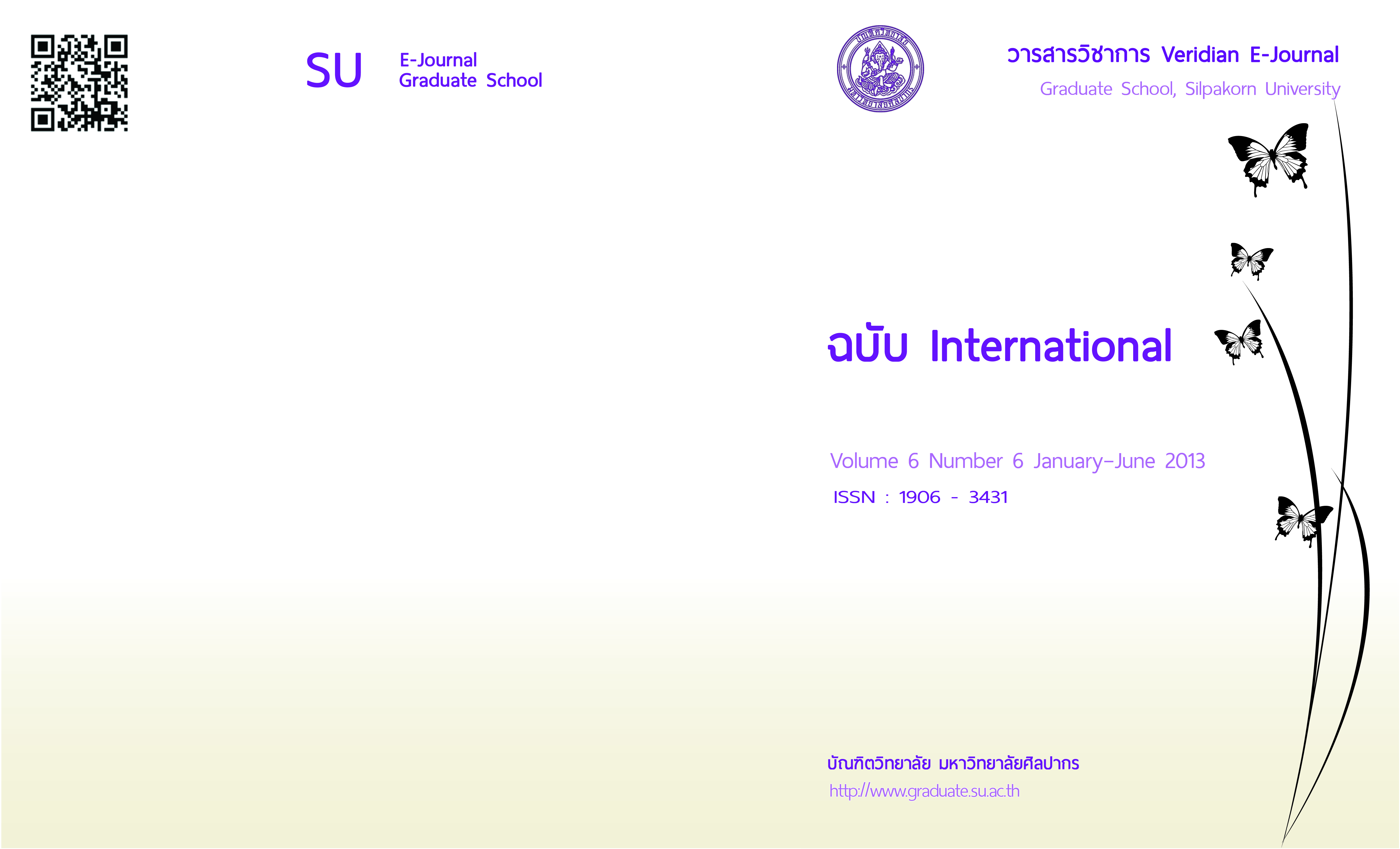Visual Culture : The Interpretation of Bangkok’s Historic Streetscapes
Main Article Content
Abstract
The impact of globalization and changes in our contemporary world has brought about conformity to everyday environment and triggered identity loss that affects the spirit of place. With regards to this issue, this article explores the means of visual communication for interpreting “living” environments in everyday context that stimulates perceptions and experiences of place identity in historic townscapes. Based on semiological approach and mapping technique, findings from the study indicate that visual appearances and cultural products of three selected Bangkok historic streetscapes, namely Phra Chan and Maharaj Roads, Phra Athit and Phra Sumen Roads, and Yaowaraj Road, reflect a “living” atmosphere. This is due to not only the existing physical fabrics but also new developments which promote social activities of everyday life. In so doing, they fill the gap between historical and existing contexts and exhibit good visual stimuli that evoke experiential existences of the past, in turn, lead to better understanding of the whole context of Bangkok Old Town. Results of the investigation confirm that architectural design and urban planning are significant factors in the enhancement of the visual culture of Bangkok Old Town. Thus it is anticipated that the model in this study will be useful for the purpose of conservation of living heritage places with non-Western contexts so as to enhance their visual culture in the twenty-first century.
Article Details
Section
บทความ : International

